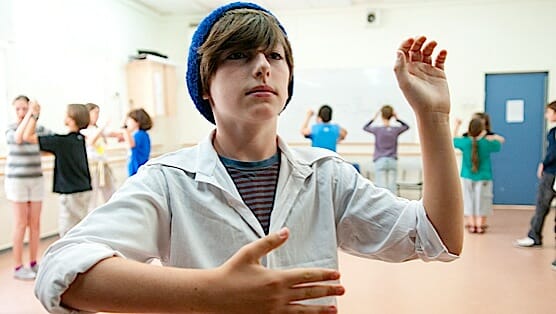Dancing in Jaffa

It would be impossible for a single documentary to capture and explain all that has occurred in conflict areas in the Middle East. However, award-winning Dancing in Jaffa director Hilla Medalia goes in through the side door, using children’s ballroom dancing classes in Israel as a lens through which to understand the complex political, religious, and racial issues that still prevail. Following renowned ballroom dancer Pierre Dulaine, Dancing in Jaffa falls into many narratives categories, as a film about the healing power of art, the resilience of the young, and one amazing teacher who transforms a community. That it is a true story, makes it all the more incredible.
Pierre Dulaine returns to his hometown of Jaffa, Israel, for the first time in decades to accomplish the impossible. In an area still rife with conflict, hatred and protests, he wants to bring Palestinian and Jewish children together for a ballroom dance competition. He begins by bringing his Dancing Classrooms program to three different schools, which proves to be a difficult task in and of itself. Even students of the same cultural background do not necessarily jump at the opportunity to learn ballroom dancing. Throw in the fact that that they are all pre-pubescent (and, thus, mortified at the thought of dancing with the opposite sex), and you have a partially humorous, partially frustrating experience for Mr. Dulaine. However, he expresses a firm belief that dance will allow these children to get to know each other in a way otherwise impossible. His fervent hope is to create trust among the fellow students, and then trust among the “enemy” with whom he will later ask them to dance.
Dancing in Jaffa is especially successful (and most moving) as a profile of the young students in Dulaine’s class and their families. We watch as many of them are affected in precisely the way that Dulaine predicts they might be. Over the course of the film the shy, outcast students—the troublemakers, and the ones experiencing difficulties at home—are gradually transformed. Many are unrecognizable at the final competition, heads held high as they dance together to Latin, American and classical music. Even those of us who believe that art can change a young person’s life will be astounded at the visible effects of Dulaine’s work.
-

-

-

-

-

-

-

-

-

-

-

-

-

-

-

-

-

-

-

-

-

-

-

-

-

-

-

-

-

-

-

-

-

-

-

-

-

-

-

-








































